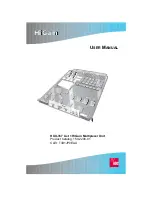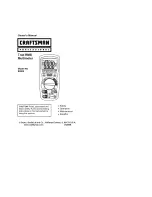
150-357-200-02, Issue 2
Overview
HXU-357 List 1
February 9, 1999
5
Functional Overview
Transmit Signal Flow
In the transmit direction, the HXU-357 takes the 28 incoming bipolar,
asynchronous, Tl low-speed signals, and adds line conditioning. It then
multiplexes the signals with DS3 overhead data and stuffing bits to produce
an industry-standard DS3 data stream.
The DS3 data and timing signals are converted into a signal for coaxial
interface to external equipment. In a 1:1 protection configuration, the
microprocessor on each card monitors the integrity of the transmit data signal
from the active (primary) and standby card and communicates with the other
to determine the online card.
Receive Signal Flow
In the receive direction, the HXU-357 converts the incoming DS3 signal into
clock and data signals for interface to the demultiplexer circuitry. In a 1:1
protection configuration, the microprocessor on each card monitors the
integrity of the receive data signal and communicates with the other to
determine the online card.
The demultiplexer circuitry receives the DS3 data and timing signals and
demultiplexes them into the 28 DS1 signals. All stuffing bits added for bit
synchronization at the transmitting end of the system are deleted from the
data stream prior to line signal encoding.
Protection Switching
In a 1:1 protected configuration, the primary card is defined as the active or
online card. The secondary card is the standby. The microprocessors on each
card communicate with each other to determine active and standby status.
When a card fails, either because the external watch dog timer timed-out or
because the software detected a failure of the hardware, a priority switch is
initiated. If the failure is on the primary card, a priority switch to the
secondary card occurs. Priority switching occurs from the secondary card to
the primary card and, if necessary, back again until the fault is corrected or
more than three switches occur in a 10-minute period.
















































